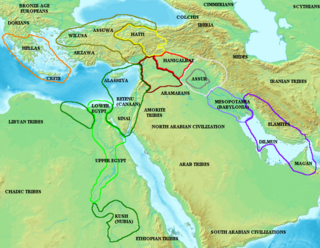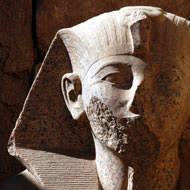Akhenaton is considered to be one of Egypt’s kings in ancient times. Originally he was crowned Amenhotep IV. He changed his name in order to show the new meaning not only of his name but of a new epoch in which he would have been a key figure. Akhenaton means a person who is useful for Aten, this person was really Amenhotep. (Winton, 2001)

Being a part of the Egyptian Dynasty of the 18th century he established his own religious rules and standards. Traditional principles and religious rules of the Egyptian society of that time did not undergo changes on the part of Akhenaton. He was a strong personality and wanted to show his power of influence on the majority of society. He built a new city having his name and demonstrating individual independent views of its king. The whole family of Akhenaton lived in his city and led the Aten worship. (Reichley, 1995)
Akhenaton is also known as a creator of new art. This kind of art made human beings more stylized. His image of a person had slender limbs, a long head, and a body in the shape of a pear. The depictions of the scenes had intimate character. For example, Royal representatives were illustrated under Aten’s rays and playing with the daughters. In art, the role of women was more prominent and paid special attention to the royal female. His personality influenced the style of the language in that period which was closer to Egyptian.

Among the great number of Gods Egyptians believed in, Akhenaton recognized only his own Sun God. This God was a new kind of solar deity. Society perceived him differently; he was especially popular among the nobility. Akhenaton was the representative of a monotheistic religion and later this type was viewed as present Judaism. He was promoting the ideas of monotheism. In his view, it was something that could be reached by biblical Moses. His views were researched by present scholars and compared in many aspects with Judaism. (Fermi, 2001)
Akhenaton’s impact on the art, religion, and rules of life was evident. He influenced every sphere of social life and even after his death it was difficult to renew the former traditions and views on life that were established by previous pharaohs. He rearranged the state and contributed a lot to the religion and art spheres. His art revolution and religious reforms brought rapid changes to the society of Egypt.
He died when his reign was about 17th year and left a significant print on the development of the religion. Ancient priests strived to return their ideas to society after Akhenaton’s death but met social contradictions. Only Akhenaton’s religion had a natural character underlining the significance of all the natural phenomena and the Sun. Such a fixed position existed very long in Egyptian society. (Rasheed, 1993)
His monotheistic religion refused traditional Gods in Egypt; some features of his religious methods can be seen nowadays which proves his major power in that time. Some historians name Akhenaton as “the first historical individual”. His solar system covered all fields of science and art. Akhenaton’s reign is known as a rebellion against all other religions just but Akhenaton’s. By building his own city Akhenaton left his name in world history and his ideas were a background for many religious directions.
References
Rasheed, El-Enany. Naguib Mahfouz: The Pursuit of Meaning. Routledge, 1993. 271 pgs.
Reichley, James. Religion in American Public Life. The Brookings Institution, 1995. 402 pgs.
Winton, Thomas. Documents from Old Testament Times: Society for Old Testament Study. 2001.
Fermi, Biko. African Foundations of World Religions: Magazine article by New African, 2001.